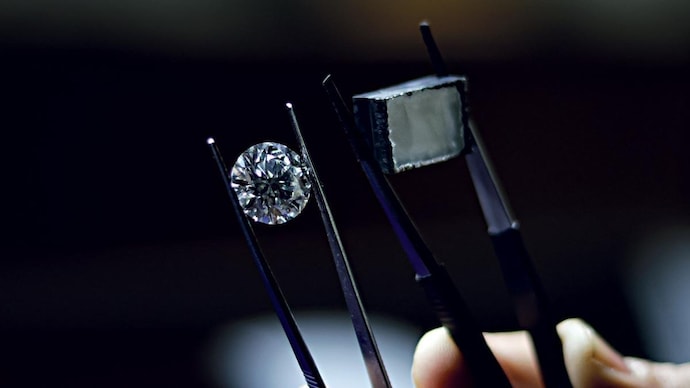Diamonds come in a variety of shapes, each with its unique charm and appeal. When choosing a diamond, one important consideration is selecting the right shape that complements your personal style and needs. However, every diamonds shapes pros and cons that could impact your decision. This article will explore the advantages and disadvantages of various diamond shapes to help you make an informed choice.
Table of Contents
Toggle1. Round Brilliant Cut: Pros and Cons
The round brilliant cut is by far the most popular diamond shape, known for its dazzling sparkle and timeless elegance. Let’s take a closer look at its pros and cons.
Pros
One of the main advantages of the round brilliant cut is its exceptional ability to reflect light, creating unmatched brilliance. The symmetrical shape allows for maximum light return, making it an ideal choice if you want a diamond that shines brightly. This shape is also versatile, pairing well with various settings and jewelry styles.
Cons
On the downside, the round brilliant cut is often the most expensive option. This is due to the demand and the amount of rough diamond that is lost during the cutting process. While it offers great brilliance, you might have to compromise on size or clarity if you are working within a budget.
2. Princess Cut: Pros and Cons
The princess cut is another popular diamond shape, especially for engagement rings. It has a square or rectangular form, with pointed corners that add a contemporary touch to its classic appeal.
Pros
One of the key benefits of the princess cut is its modern, angular shape, which provides a bold and striking appearance. The cut also maximizes the diamond’s carat weight, making it appear larger than other shapes of the same carat size. Additionally, the princess cut has a brilliant facet pattern that offers excellent sparkle.
Cons
The princess cut diamond’s sharp corners make it more prone to chipping, especially if not set in a protective setting. Additionally, because it’s a square or rectangular shape, it may show inclusions more easily than other shapes. The princess cut also tends to lose some of its brilliance in larger sizes compared to the round brilliant cut.
3. Cushion Cut: Pros and Cons
The cushion cut diamond, also known as a pillow-cut, features rounded corners and larger facets. This shape has a vintage charm that has grown in popularity in recent years.
Pros
The cushion cut diamond’s large facets help enhance its brilliance and fire, giving it an eye-catching sparkle. Its soft, rounded edges make it a romantic and timeless choice, particularly for vintage-inspired jewelry. The shape also tends to hide inclusions better than other cuts, making it a good option for lab created diamonds with lower clarity.
Cons
While the cushion cut is beautiful, it doesn’t offer the same level of brilliance as a round or princess cut. Its softer edges also mean that it can appear smaller when compared to other diamond shapes of the same carat weight. Additionally, some people feel that the cushion cut lacks the modern appeal of more geometric shapes.
4. Emerald Cut: Pros and Cons
The emerald cut is a rectangular shape with stepped facets, creating a mirror-like appearance that is sleek and sophisticated. This cut has an understated, vintage appeal.
Pros
One of the emerald cut’s biggest advantages is its unique step-cut design, which provides a hall-of-mirrors effect rather than traditional brilliance. Its large, open facets give the diamond a sophisticated, elegant look that is distinct from other shapes. The elongated form can also make the diamond appear larger on the finger, and it tends to flatter longer fingers.
Cons
The emerald cut doesn’t sparkle as much as other shapes like the round or princess cut. Because of its large, open facets, inclusions and imperfections are more visible, meaning you may need to invest in a higher clarity diamond to ensure a clean look. Additionally, the corners are more vulnerable to damage if not properly set.
5. Oval Cut: Pros and Cons
The oval cut diamond offers a similar brilliance to the round brilliant cut but with a more elongated shape that adds a touch of uniqueness.
Pros
One of the biggest advantages of the oval cut is its elongated form, which can create the illusion of a larger diamond. The shape also has a slimming effect on the fingers, making it a popular choice for engagement rings. Additionally, the oval cut offers great brilliance and fire, similar to the round cut, but often at a lower price.
Cons
One of the downsides of the oval cut is the “bow-tie effect,” where a dark bow-tie-shaped shadow appears across the center of the diamond due to how light passes through it. While some people find this feature attractive, others see it as a flaw. Oval cuts can also sometimes emphasize imperfections and inclusions more than other shapes.
6. Pear-Shaped Diamonds: Pros and Cons
The pear-shaped diamond is a hybrid of the round and marquise cuts, featuring a teardrop-like shape that is both elegant and unique.
Pros
The pear-shaped diamond’s distinctive teardrop shape makes it a striking choice for those seeking something different from traditional cuts. Its elongated shape can also make the stone appear larger than its actual carat weight. Like the oval cut, the pear shape has a slimming effect on the finger and works well in a variety of settings.
Cons
The pear-shaped diamond can be more prone to chipping, especially at the pointed end, so a protective setting is essential. Additionally, like the oval cut, it may display the bow-tie effect, which some may find undesirable. Finally, because of its asymmetry, finding a well-proportioned pear-shaped diamond can be more challenging than other shapes.
Conclusion
Choosing the right diamond shape depends on your personal taste, budget, and lifestyle. Each shape has its pros and cons, so it’s essential to consider what factors are most important to you—whether it’s brilliance, size appearance, or durability. By understanding the advantages and disadvantages of each diamond shape, you can confidently select a diamond that reflects your style and will last a lifetime.



:max_bytes(150000):strip_icc()/GettyImages-560231979-d28ad2e66dcf4cae9fc319f46e606c21.jpg)

